In the final crunch-time push for Q4 sales, many Amazon FBA sellers are not sure whether to hold, lower, or raise their prices. So today, we’ll be assessing the right times to raise or lower your prices…and when to do nothing at all.
We discuss why there is no one-size-fits-all answer to today’s question before jumping into our biggest Q4 pricing tip, the parameters that would warrant you making price adjustments, what to think about regarding your holiday-themed inventory items, and details on how to get hold of our exact pricing rules for BQool – our preferred automatic repricing tool.
Listen on the podcast player below.
Like what you hear? Tell a friend… and be sure to leave us a rating and a review. Here’s how.
Key points from Episode 217:
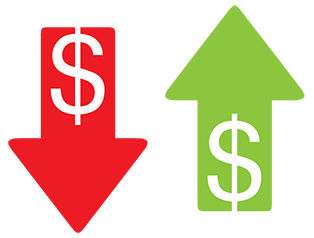 Why there is no one-size-fits-all answer the dilemma of when to hold, lower, or raise your prices in the backend of Q4.
Why there is no one-size-fits-all answer the dilemma of when to hold, lower, or raise your prices in the backend of Q4.- Our biggest Q4 pricing tip!
- The times when lowering your prices are NOT a good idea… even when everyone else is.
- The parameters that call for price adjustments.
- What to consider regarding holiday-themed inventory items.
Links and resources mentioned in this episode:
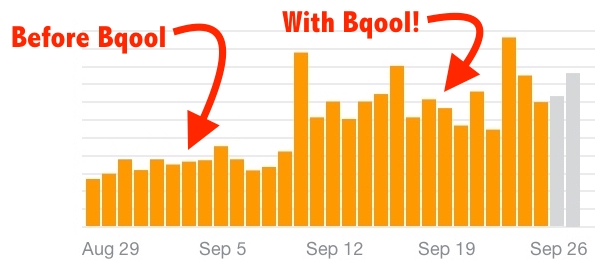 Keepa – Amazon Product Price and Sales Rank History Tracker
Keepa – Amazon Product Price and Sales Rank History Tracker- BQool – Automatic Repricer – 2-week free trial
- BQool Review
- Contact me here if you sign up for a BQool 2-week free trial, and I’ll send you my personal repricing rules that doubled my inventory.
Right-click here and save as to download this episode to your computer.
![]()
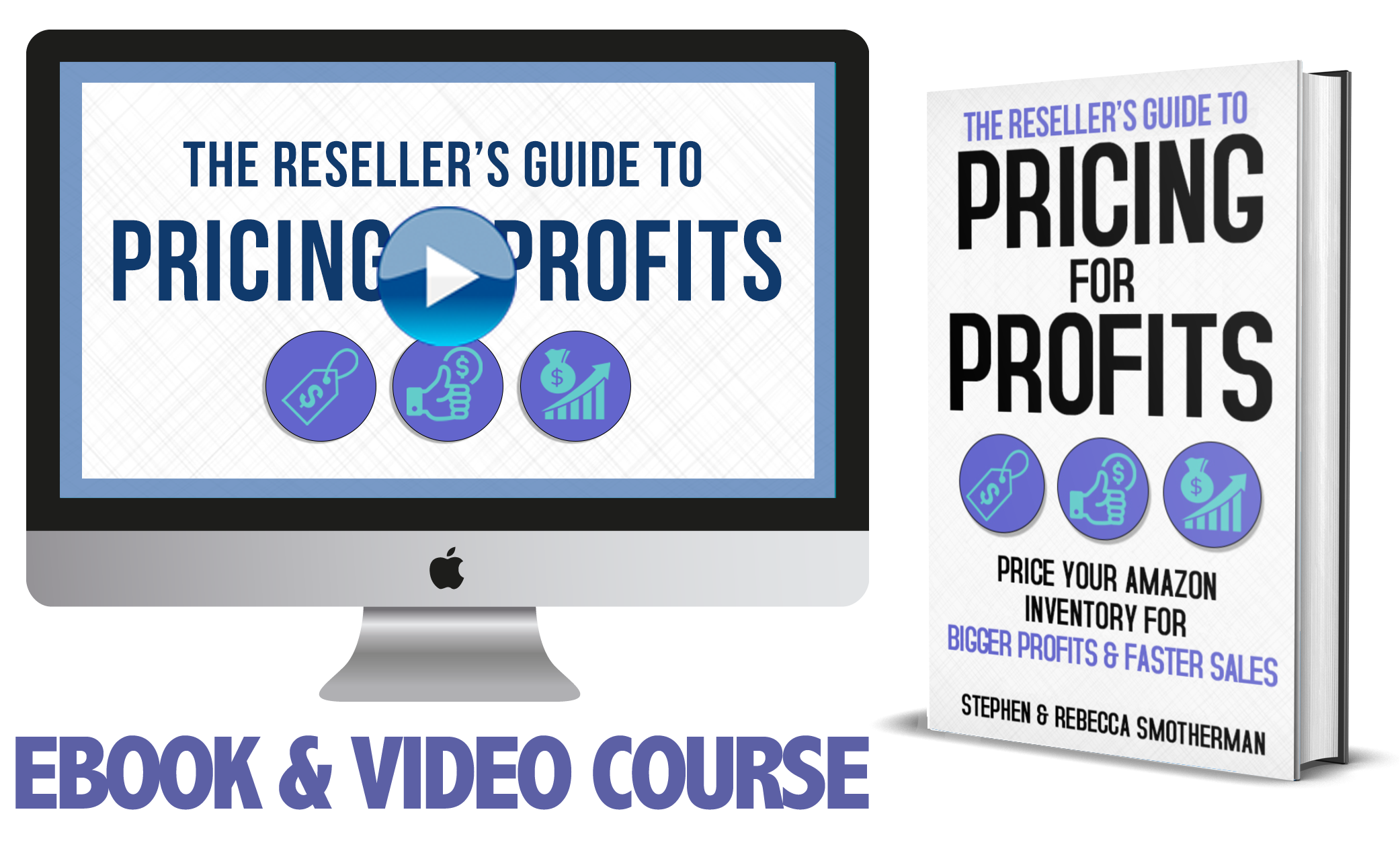 The Reseller’s Guide to
The Reseller’s Guide to
Pricing for Profits
Do you have a strategic pricing strategy for the items you’re selling on Amazon? Your pricing game plan can determine whether your Amazon FBA business succeeds or fails.
Amazon (as a seller) has a pricing strategy… and successful third-party sellers have a pricing strategy. It’s about time you had a tactical and calculated pricing strategy that will help take your Amazon business to the next level.
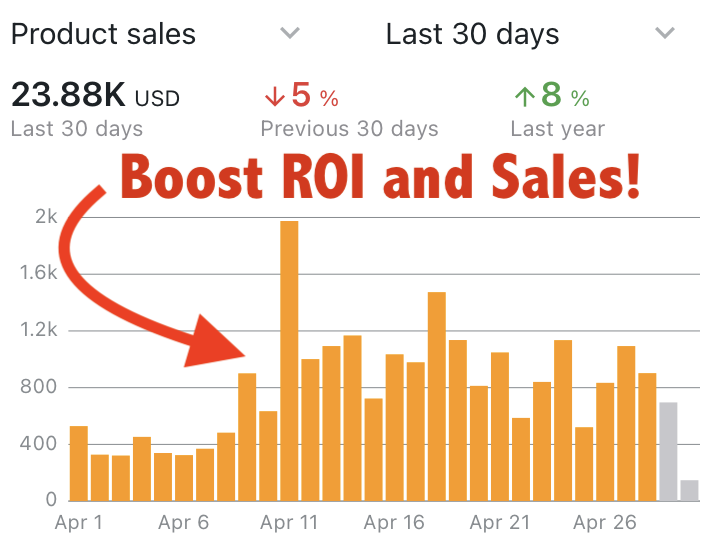 In The Reseller’s Guide to Pricing for Profits, we’ll help you craft and execute the perfect pricing strategy that will help you increase your profits while still consistently selling your inventory. With this course you’ll be able squeeze more ROI out of every single items in your inventory. With increased profits you’ll be able to grow your Amazon business faster and set yourself up for long-term success.
In The Reseller’s Guide to Pricing for Profits, we’ll help you craft and execute the perfect pricing strategy that will help you increase your profits while still consistently selling your inventory. With this course you’ll be able squeeze more ROI out of every single items in your inventory. With increased profits you’ll be able to grow your Amazon business faster and set yourself up for long-term success.
The course is a combination video course (3+ hours of training) and a 70+ page ebook. The videos and book both share the exact same content (so you can pick the format you most like to learn from). The course also comes with multiple bonuses at no additional charge!
As a special “podcast perk” you can use the coupon code PROFIT at checkout to save $10 off the cost of enrolling in The Reseller’s Guide to Pricing for Profits.
Back to the main page for The Full-Time FBA Show
More Episodes from the Full-Time FBA Show podcast:
Don’t miss an upcoming episode! Subscribe, download episodes, and review the Full-Time FBA Show:
-
-
- Subscribe on iTunes
- Follow on Spotify
- Follow on Amazon Music (or just ask Alexa to “play The Full-Time FBA Show podcast”)
- Follow on iHeartRadio
- Subscribe on Podbean
- Subscribe on Podbay
- Subscribe on Podchaser
-
![]()
Episode 217 Transcript:

[INTRODUCTION]
[0:00:01.8] ANNOUNCER: Welcome to The Full-Time FBA Show. In each episode, it’s our goal to help you turn part-time hours into a full-time income, selling almost anything on Amazon. Now, your hosts of the show, Stephen and Rebecca Smotherman.
[WELCOME]
[0:00:20] REBECCA: Welcome to episode number 217 of The Full-Time FBA show. We’re so glad you’re joining us today. We’re going to be talking about when to hold or lower your price in December. We are in December. Here with me to talk about this topic is my co-host, Stephen Smotherman.
[0:00:40] STEPHEN: Yeah. Most of the time in December, we’re either holding our price or we’re lowering our price. But we are going to sometimes raise our price too. We’ll talk about that too.
[0:00:52] REBECCA: It is crunch time for the final push for Q4 sales. Some Amazon sellers are starting to wonder, should I lower my prices on the inventory items that are not selling yet? When should I lower my prices? Should I hold my prices? Is it time to raise my price? Maybe you went deep on a buy and you’re worried you’ll still be holding on to that inventory and many, many units come December 25th. Or maybe you’ve been holding on to some inventory for a few months now and it’s still not selling, even though it’s now December, sales velocity should be the fastest of any time during the year. So, let’s break down what to do in these situations.
[0:01:29] STEPHEN: Just so you know, as with any inventory item, it’s going to depend on a few factors. There’s no one size fits all answer on when to lower your prices in December, but for this episode, we’ll share with you our best practices on what to do in these situations. Let’s start off the episode with the biggest Q4 pricing tip. That is this, let an automatic repricer take care of the pricing for you.
The Q4 and especially December is way too busy of a time and too important of a time to spend a lot of your time of assessing over your prices. If you have an automatic repricer – and we highly recommend the automatic repricer called BQool, B-Q-O-O-L – then just trust in the settings that they are set up correctly and let the repricing rules of your repricer just keep track of your prices and keep your prices competitive for you. That’s why you have an automatic repricer. If you don’t have the right repricer rules or even the right automatic repricer, then we can share with you our exact repricer rules. So, stick around to the end of the episode and we’ll share with you how to get our exact repricer rules that literally doubled our Amazon sales.
[0:02:38] REBECCA: The way repricer rules are set up is that you enter your items by cost, and then the minimum price that you’re willing to sell the item for, and then your maximum price that you want to sell the item for. Then you set up exactly how the repricer is going to price in reaction to the buy box price as a rule. You’re going to be looking at the buy box price, the competition’s price, the number of sellers, the quality of competition, if Amazon is competing and so on. In fact, it’s possible to have hundreds of possible parameters for a repricer to automatically track and then that will show them how to adjust your price.
Again, like Stephen said, the biggest pricing tip truly is just to trust your repricer to do its job. We know that sometimes things don’t sell like you expect them to or items keep selling just fine, but the price is tank and get so low that they’re no longer close to being profitable for you. Sometimes before things get to that level, we might need to adjust some of our basic repricing parameters.
[0:03:43] STEPHEN: Yeah. I mean, maybe you thought that you didn’t want to sell under your minimum price since most resellers use their minimum price as the same as their breakeven price when they are setting up their repricer rules. So, it makes sense to not lower your minimum price, because that means you’re going to take a loss, right? You’re going to make money back that’s less than what you paid for it, but what if you realize that the price of the item is tanking and tanking hard? It’s sometimes wise to take a loss on a sale, simply because a small loss today is going to be better than a big loss tomorrow. I would say if the price of the item that you’re selling is tanking, then it might be a good idea to cut ties with that inventory item and take a small loss today.
Again, before it becomes a big loss tomorrow. As always, before you make any pricing decision, a 60 second research glance at that items Keepa graph is always a good idea. Remember, Keepa is a program that tracks the sales rank history and pricing history of almost every item being sold on Amazon. If it looks like the item is going to tank in price and not recover anytime soon, then it’s probably wise to just cut ties with that item. Lower the price now, take a small loss today before it turns into a bigger loss tomorrow.
[0:04:59] REBECCA: Now, if we’re talking about holiday themed inventory that hasn’t sold yet, then that’s a different story. Maybe you have some Christmas decor or a holiday inflatable lawn decoration, something like that. Now might be a good time to lower your prices to sell out before the holiday decor rush has passed. This episode of the show is dropping on December 4th and the number of online Christmas decor shoppers are probably going to start dwindling right around now. Make sure you’re repricing appropriately. Again, Keepa is your best friend in this situation, so be sure to consult a Keepa graph and make an item-by-item decision on whether to hold or to lower your price.
[0:05:40] STEPHEN: Yeah. Keepa might actually show you that the competition is actually almost sold out for some reason, that these items still really sell well in late December and January. Reading a Keepa graph correctly might actually show you that some higher price sales are coming soon, so you can just wait it out. Again, never just make a pricing decision without Keepa ever.
[0:06:01] REBECCA: Let me repeat that too. Never make a pricing or repricing decision without looking at the Keepa graph ever. Earlier in the show, we told you how you can get our exact repricing rules that we use and that these always keep our prices competitive. They don’t just lower our prices, but they strategically will raise our prices at times. That’s by using specific rules via the automatic repricer called BQool. I got to tell you, in Q4, especially in December, it’s the most frequent time of the year when BQool increases our prices on Amazon. It helps us to make more Q4 money.
Here’s what you do. Go to fulltimefba.com/bqool, B-Q-O-O-L, fulltimefba.com/bqool. Start a free two-week trial of BQool. We’ll be sure to put this link in the show notes at fulltimefba.com/217 for this episode to 17. Once you sign up for your free trial, email us at fulltimefba.com/contact and tell us you just started BQool and ask for our own personal repricing rules. Our assistant, Ashley, will email those rules to you within a few days and will include not only our exact BQool repricing rules, but also how to set up the rules. Then during your free trial, you’ll already start to see the repricing tool in action. Your inventory will sell faster and it will often sell for a higher price than you expect those items to sell for. It really is an amazing tool.
[0:07:35] STEPHEN: 100%. Getting set up with an automatic repricer, especially BQool, is super easy. It’s something we waited way too long to get set up to finally use. I think one of the biggest regrets I have in my Amazon business is not using an automatic repricer sooner. I mean, it’s seriously a game changer. Again, head over to fulltimefba.com/bqool, right now, sign up for that two-week free trial, request our exact repricing rules, put those rules into practice and start making more money right now, play in a second.
[0:08:12] REBECCA: Thank you so much for joining us for this episode of The Full-Time FBA show. We’re on episode number 217, so you can find the show notes, transcript and all of the links we mentioned for this episode at fulltimefba.com/217.
[0:08:26] STEPHEN: Next week on the show, we’re going to be talking about items that beginner Amazon sellers should avoid reselling. We’ll talk about that next week on The Full-Time FBA show.
[OUTRO]
[0:08:37] ANNOUNCER: That is all for this episode of The Full-Time FBA Show. Head over to fulltimefba.com/podcast, where you will find the show notes and links from this episode. While you’re there, subscribe to our newsletter where you’ll get several free downloads of our popular and helpful Amazon FBA resources. Now, take action on what you have learned today, so you can find success at turning part-time hours into a full-time income with Amazon FBA.
[END]
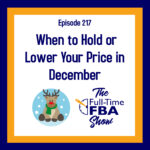

Leave a Reply